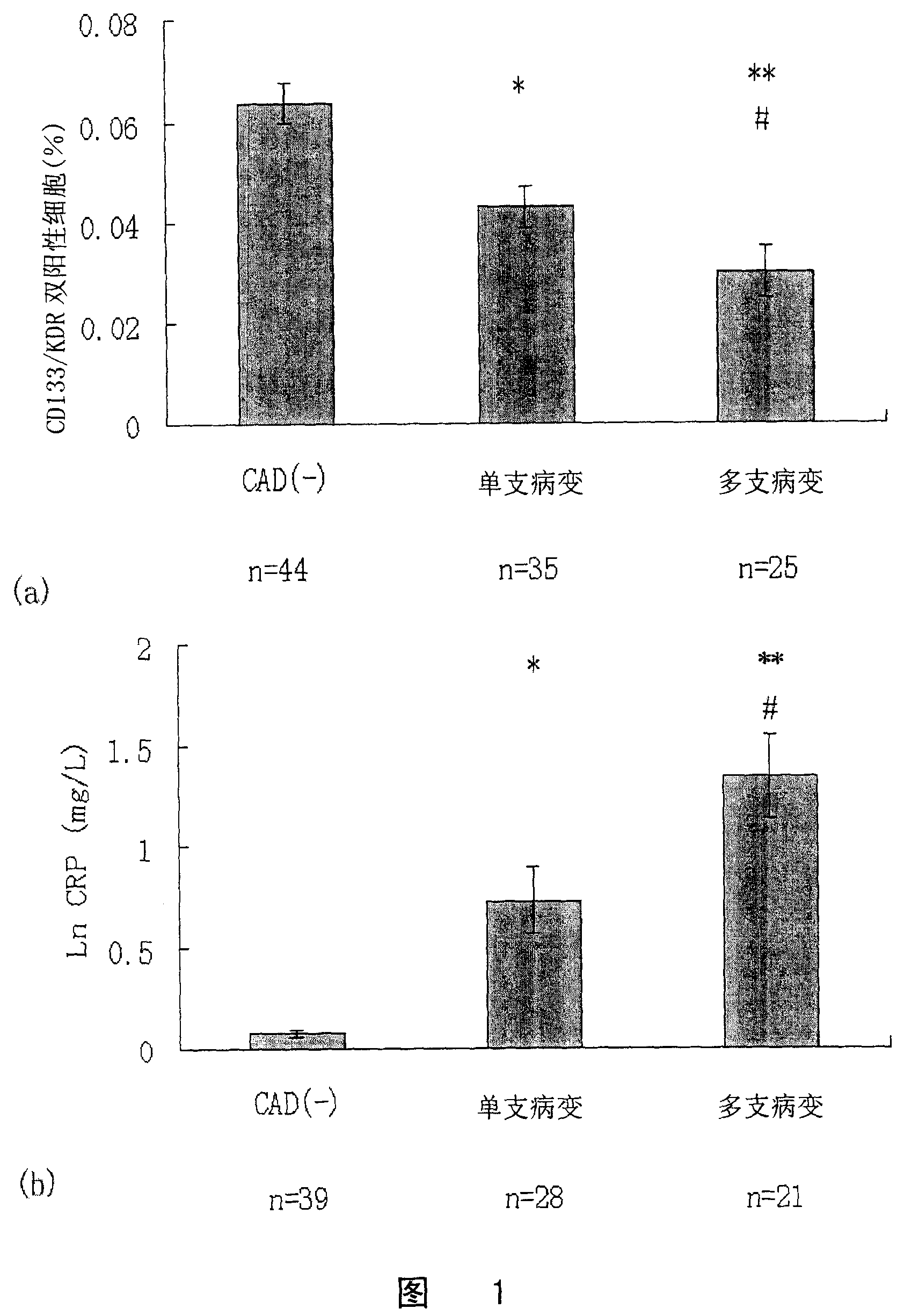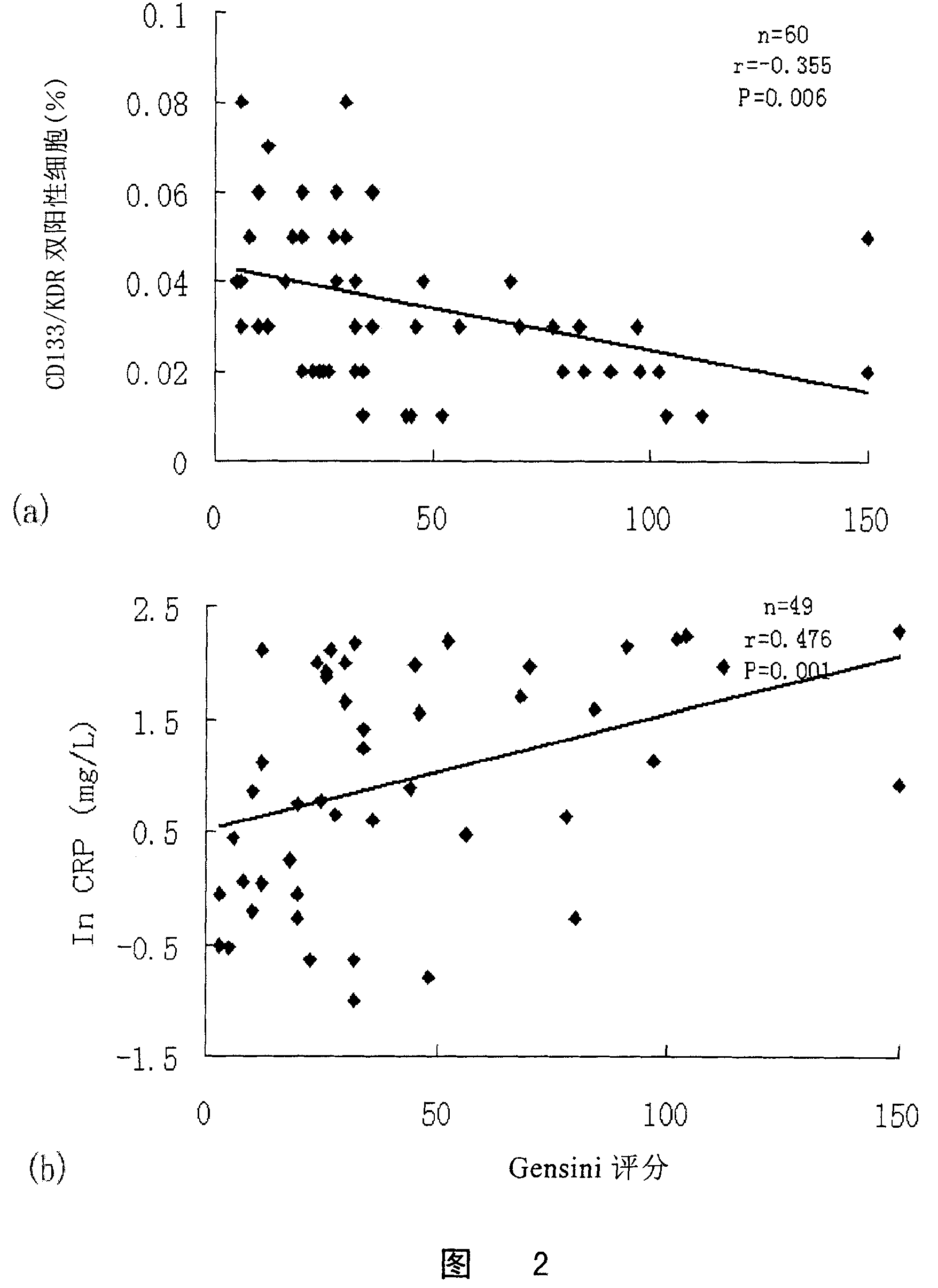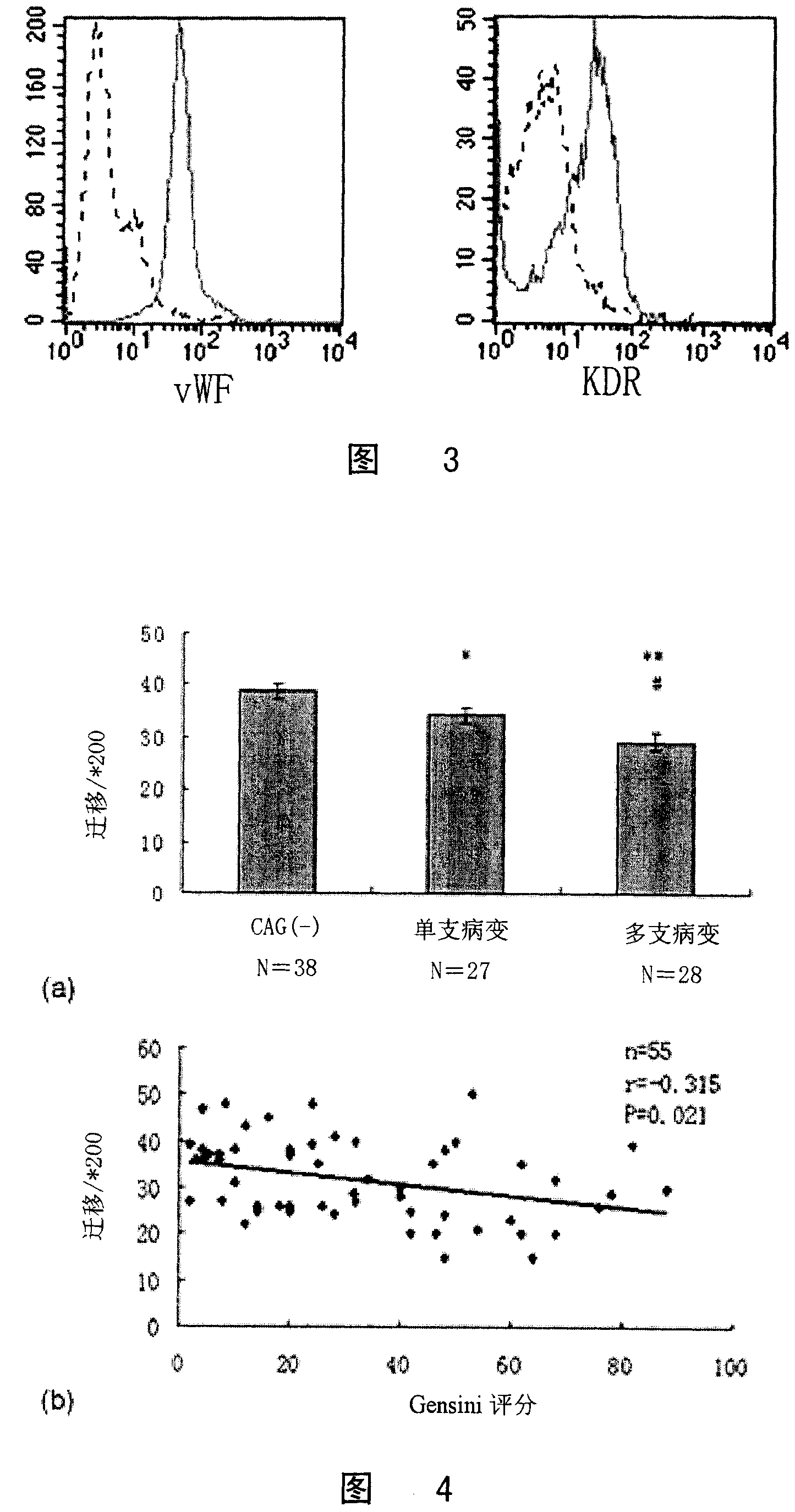Correlation analysis of circulation endothelium progenitor cell and coronary artery pathological changes
A technology for coronary artery disease and endothelial progenitor cells, which is applied in the field of molecular biology and can solve problems such as unproven coronary artery disease correlation.
- Summary
- Abstract
- Description
- Claims
- Application Information
AI Technical Summary
Problems solved by technology
Method used
Image
Examples
Embodiment 1
[0044] method
[0045] 1. Research object
[0046] From March to May 2004, 104 inpatients who underwent coronary angiography (CAG) were studied (CAG positive or negative). Patients with malignant tumors, peripheral vascular disease, and proliferative retinopathy were excluded; patients with acute coronary syndrome, acute myocardial infarction, inflammation, acute bleeding or blood transfusion history, and patients taking statins or erythropoietin within the past 2 months were excluded; Premenopausal women were excluded.
[0047] 2. General clinical information
[0048] Collect basic information of all patients: gender, age, height, weight, blood pressure. Detailed medical history: hypertension, diabetes, coronary heart disease, cerebrovascular disease, kidney disease, smoking history, drinking history, lifestyle (whether to exercise), family history of coronary heart disease. And make routine laboratory tests: fasting and postprandial blood glucose, total cholesterol, low-...
Embodiment 2
[0110] Screening for accelerators that boost EPC numbers
[0111] Take 10ml of fasting peripheral blood, and obtain mononuclear cells by density gradient centrifugation within 4 hours. Combine the same amount (approximately 1×10 5 ) mononuclear cells were inoculated on 6 culture plates coated with fibronectin (FN) (BD Biosciences, CA, USA).
[0112] In the 3 culture plates of the control group, culture in EGM medium (containing 10% fetal bovine serum, penicillin 100U / ml, streptomycin 100U / ml) (Cambrex, Walkersville, MD) without adding any compound to be tested 4 days.
[0113] In the 3 culture plates of the control group, in the EGM medium (containing 10% fetal bovine serum, penicillin 100U / ml, streptomycin 100U / ml) (Cambrex, Walkersville, MD) with a concentration of 0.1M of the compound to be tested ) for 4 days.
[0114] After 4 days of culture, wash off the non-adherent cells in the test group and the control group with PBS, change the culture medium and continue to cul...
Embodiment 3
[0118] Screening for compounds that promote the ability of circulating endothelial progenitor cells to migrate and adhere
[0119] For the promoters screened in Example 2 to promote the number of EPCs, it was further determined whether they have the ability to promote the migration and adhesion of circulating endothelial progenitor cells:
[0120] (a) Detection of migration ability of EPCs
[0121] Adherent cells were collected and counted as in Example 2. Put 600 μl culture solution and vascular endothelial growth factor (VEGF, 50ng / ml) into the lower chamber of transwell (8-μm pore size) (Corning Costar Inc., Corning, New York, USA), and put 2×10 4 EPCs were suspended in 200 μl of culture solution and injected into the upper chamber, cultured for 24 hours, scraped off the immobile cells on the filter membrane, fixed with 75% ice ethanol, stained with HE, and randomly selected 5 microscope fields (×200) to count the cells that migrated to the lower layer.
[0122] (b) Detec...
PUM
| Property | Measurement | Unit |
|---|---|---|
| Sensitivity | aaaaa | aaaaa |
| Sensitivity | aaaaa | aaaaa |
Abstract
Description
Claims
Application Information
 Login to View More
Login to View More - R&D
- Intellectual Property
- Life Sciences
- Materials
- Tech Scout
- Unparalleled Data Quality
- Higher Quality Content
- 60% Fewer Hallucinations
Browse by: Latest US Patents, China's latest patents, Technical Efficacy Thesaurus, Application Domain, Technology Topic, Popular Technical Reports.
© 2025 PatSnap. All rights reserved.Legal|Privacy policy|Modern Slavery Act Transparency Statement|Sitemap|About US| Contact US: help@patsnap.com



